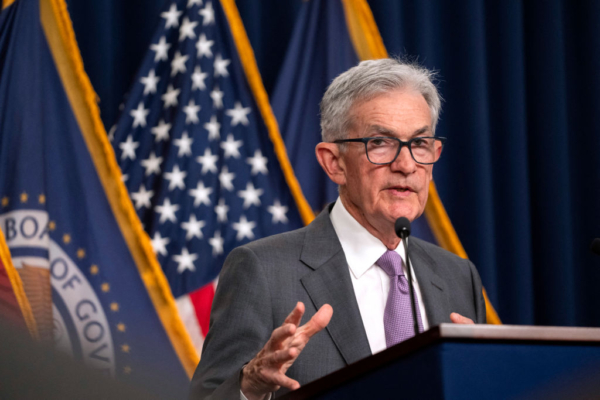The Federal Reserve is widely expected to announce a rate cut following the conclusion of its two-day meeting on Wednesday (September 18), though the extent of the cut remains uncertain.
Currently, the Fed’s benchmark interest rate is at its highest point in 20 years, ranging from 5.25% to 5.5%.
According to the Wall Street Journal, the size of the rate cut, whether it will be a larger 50 basis points or the more traditional 25 basis points, will depend on how Fed Chair Jerome Powell and his colleagues weigh their considerations to avoid regrets.
If the Fed is more concerned about growth and employment rather than inflation, they may opt for a more cautious approach with a larger 50 basis points rate cut.
A smaller 25 basis points rate cut would indicate that the Fed is considering the economy’s strong fundamentals and is wary of cutting rates too quickly, which could fuel risk appetite and keep inflation stubbornly high.
In the past, Fed officials have tended to raise or cut rates by 25 basis points. However, when they find that their rate stance is not in line with the balance of risks, they may act more swiftly. Fed officials raised rates by 50 and 75 basis points back in 2022 to combat high inflation.
The Fed often refers to their work as risk management, always deliberating on choosing the path that they will least regret, according to the reports.
Minutes from the Fed’s July meeting suggested some officials thought a rate cut might be warranted, but most were more inclined to wait. Data on job growth released after the Fed’s July 31 meeting fell far short of expectations. Former Fed officials criticized the Fed for missing the opportunity to cut rates.
Former Fed Senior Advisor William English told reports weeks ago that he believed a smaller rate cut was appropriate. However, the recent decline in labor market data has made him more uneasy, especially considering that even after two to three rate cuts, rates would still be relatively high.
Jim Reid, Director of Global Economics and Special Research at Deutsche Bank, believes that if the Fed is not satisfied with the expectation of a 50 basis points cut, they may use media leaks on Monday and Tuesday to clarify a 25 basis points cut as they head into Wednesday. Failure to hear media reports of a 25 basis points cut before Wednesday could further stoke expectations of a 50 basis points cut in the market.
“The media trends in the next 12 hours are crucial and may ultimately decide market pricing,” Reid added.
According to CNBC, participants predict the Fed will take a more gradual approach to rate cuts in September than the current market expectations.
A survey involving 27 participants including economists, fund managers, and strategists showed that 84% believe the Fed will cut rates by 25 basis points, while 16% expect a 50 basis points cut. The current probability of a 50 basis points cut in the Fed futures market stands at 65%.
Of the participants, 74% believe that a rate cut in September is timely to maintain a soft landing, while 15% feel it is too late.
Guy LeBas, Chief Fixed Income Strategist at Janney Montgomery Scott, stated in reports, “Although economic risks are emerging, the upcoming rate cuts by the Fed will be closer to the trend of ‘mid-cycle adjustment’ as seen in 1995, 1997, and 2019, rather than marking the end of a recession trend.”
Diane Swonk, Chief Economist at Grant Thornton, insists that the Fed should make significant rate cuts. She emphasizes that concerns about whether the Fed will be able to achieve a soft landing after raising rates too late in 2021 have grown, and the window of opportunity to achieve this goal is narrowing.
Neil Dutta, Head of Economics at Renaissance Macro Research, disagrees with the argument that a “50 basis points rate cut would spook the markets.” He stated that there would be real risks if the Fed were only to cut by a quarter of a percentage point.

